|
Thursday morning, we
checked out of our hotel and got ready to catch the shinkansen for
Hiroshima. Once again, with lots of help from the information desk
and random strangers, we were able to purchase reserve tickets and
make our way to the train platform. Here Jennifer gives Mom a call
while we wait for the train. Usually, all public phones in Japan
are bright green, gray or pink. Only the green phones seemed to
work for us to call overseas using a couple of international phone
cards we purchased to save money. |
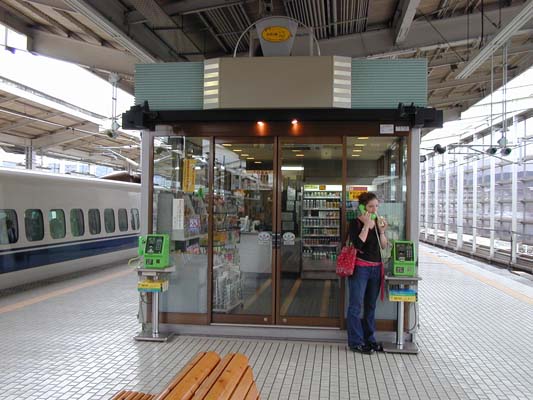 |
|
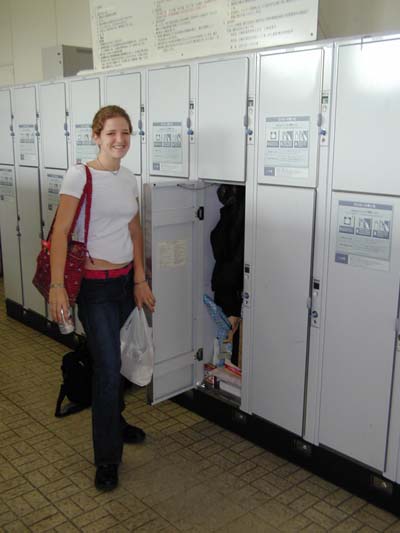 |
When we arrived in
Hiroshima, we discovered we had a major problem. After checking
with the information desk, we found that our hotel was outside
town and, in fact, would require several transfers including
taking a ferry to an island. And even then, our hotel was on the
far side of the island. It was clear that we would never be able
to make it to the hotel, check in, drop off our luggage and then
return to Hiroshima to see the Peace Park. By this time, we had
two backpacks, two overnight bags, the big box that we were
planning to mail and those darn flag staffs in a mailing tube. It
was definitely the low point of our entire trip. We sat down amid
all our stuff in the train station waiting room to figure out what
to do. I had actually decided to give up on the Peace Park and
just head for the hotel, but Jennifer rallied and said we just had
to come up with a way to make this work. There was no way we could
come all this way and not visit Hiroshima. Then the inspiration
came. I checked with the information desk and it turns out that
you are allowed to use the lockers at the station for three days.
600 yen a day and it was the best 1200 yen I spent the whole trip.
We were able to pack everything in the locker except for, you
guessed it, those Mt Fuji flagstaffs. So I stuffed them behind the
lockers up against the wall. By this time, if they disappeared
before we returned, I wouldn't mourn their passing. Now down to
just one overnight bag each, we were ready for our first stop. |
|
|
On August 6th, 1945,
the world's first atomic bomb exploded about 580 meters (almost
2000 feet) above Hiroshima. The effects were devastating and far
reaching. The hypocenter of the explosion is marked by the red
dot.
Our bus stopped at the
top-center of the map. From there we visited the Atomic Bomb Dome, walked
across the Motoyasu Bridge and made our way down to the Peace Memorial
Museum.
The mouse over picture
was the first thing we saw upon leaving the bus; a shrine covered
with messages, gifts and paper cranes. |
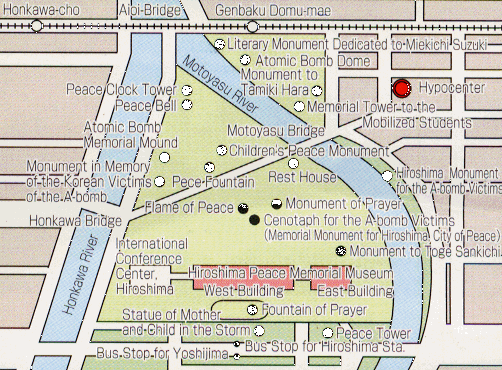 |
|
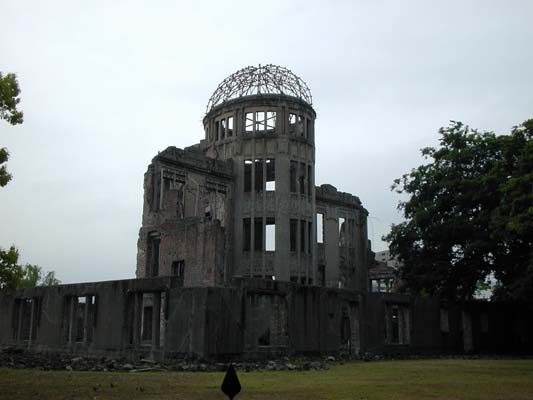 |
Originally built in 1915,
this building, now called the Atomic Bomb Dome, was left in its devastated
condition as a stark reminder of the destruction of nuclear weaponry.
As an American visiting
Hiroshima, I was filled with mixed emotions. It was heartening to see that
there was no condemnation of America or the actions taken. Rather, this
park is dedicated to peace and the avoidance of any future nuclear
wars. |
|
|
There is an ancient
Origami legend in Japan that says that folding 1000 paper cranes
(senbazuru) will so please the gods that they will grant that
person a wish.
Sadako Sasaki was only 2 at
the time of the bombing. 10 years later, she was dying from leukemia. She
started folding paper cranes in the hope that if she completed 1000 of
them, she would be cured.
She died with only about
two-thirds of the cranes completed. In tribute, her classmates folded the
rest and the Children's Monument was raised to her memory in the Peace
Park. |
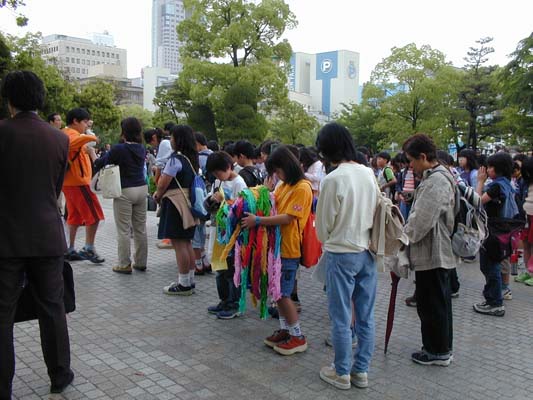 |
|
|
The center of the
monument is a young girl at the top of a dome holding a paper crane. |
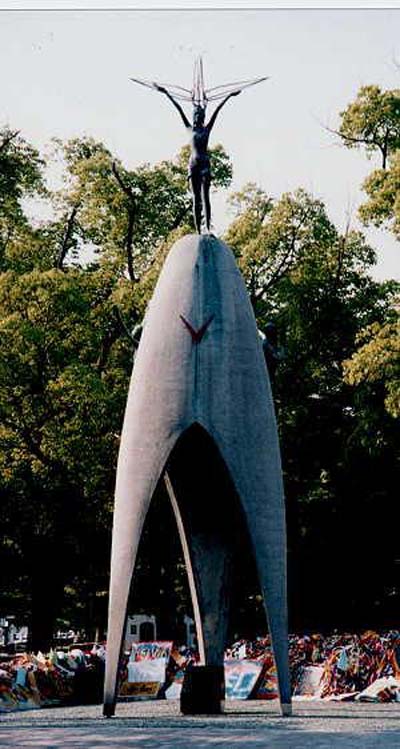 |
Since that time, children
from all over Japan have brought paper cranes to be offered in the name of
peace. It was our good fortune that we arrived at the beginning of one
such presentation.
In the picture above, three
of the children stood at the front of their class and said a few words
each for the dedication. One young girl stood off the the side holding the
bundle of paper cranes that her class had folded. |
|
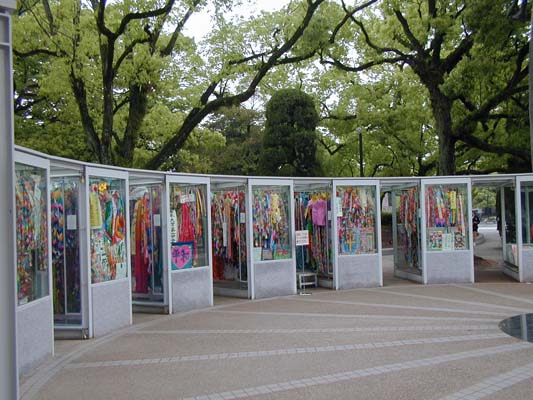 |
Surrounding the
monument were a dozen enclosures designed to hold and safeguard
the paper cranes offered by the children. |
|
|
This is a close-up of
one of the enclosures. The cranes are strung together so that they
can be hung on hooks from the ceiling. After the children made
their prayer offering, their bundle was added to the enclosure
above that has the little sign and stepstool. |
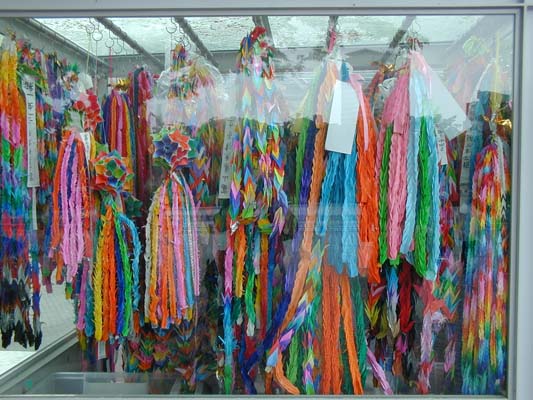 |
|
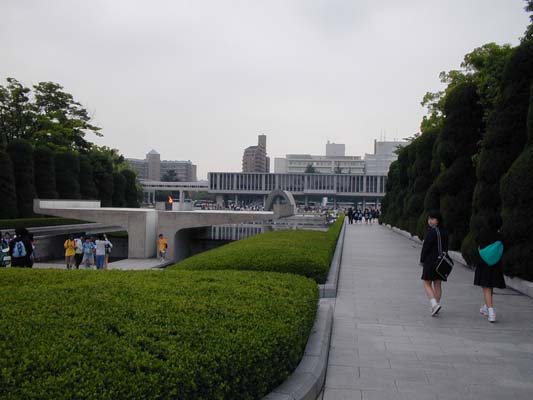 |
After our stop at the
Children's Monument, we continued on our way to the museum. Here
you can see first the Flame of Peace, shaped as hands with the
palms held upwards. This is not really an eternal flame, but
rather, it will burn until there are no more nuclear weapons in
existence. Past the Flame, you can see the Memorial Cenotaph and
in the far distance, the museum itself. |
|
|
This is the Memorial Cenotaph which contains a register of all who
have died as a result of exposure to the atomic bomb. It now lists
more than 180,000 people. School children gather in front to burn
incense and offer prayers. To the side is a
plaque in both English and Japanese with a pledge for
peace.
After viewing the Cenotaph, we entered the Memorial Museum itself
for the final part of our tour. |
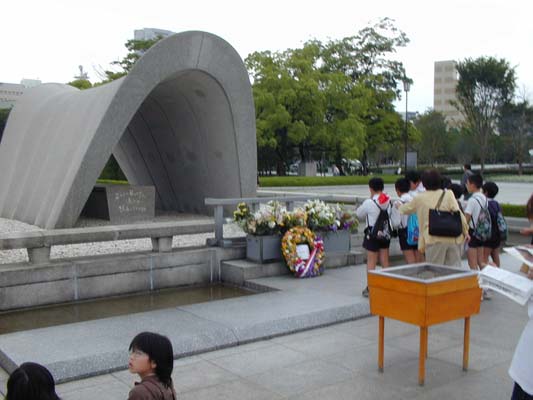 |
|
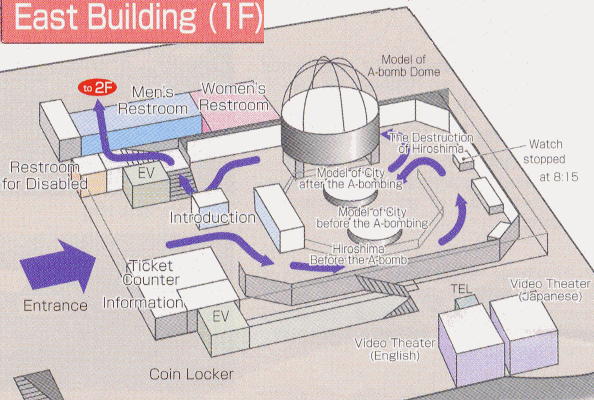 |
We came up from the stairs on the left
and then into the exhibit. This part of the exhibit used models,
films and photos to describe Hiroshima before the bombing and the
resulting ruins immediately after. As was common with such
exhibits, photography was forbidden. However, you can visit the
official Peace Memorial web site for a virtual tour. |
|
|
From the first floor, we continued through
the 2nd floor and up to the third. The model of the A-bomb Dome
extended up through the center of all three floors. Here, the
displays are dedicated to the current status of the nuclear age
and the Hiroshima peace efforts. |
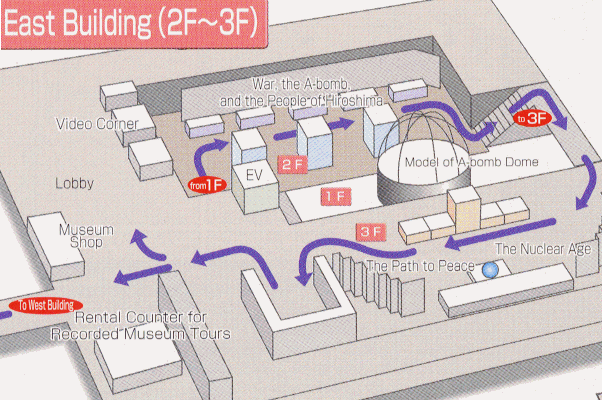 |
|
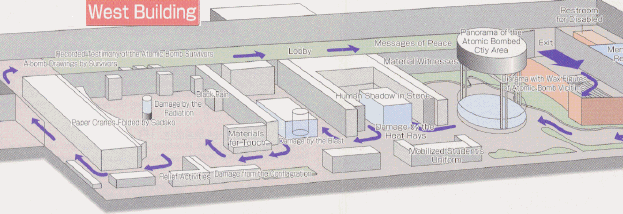 |
On to the west building, we saw actual
artifacts and displays meant to depict events and conditions of
Hiroshima following the blast. Following the purple line, we went
through the lobby. There Jennifer stood in line with the students
in order to
ink stamp a sheet of
paper to mark our visit. It was a sobering experience and not
one that I'm likely to soon forget. |
|